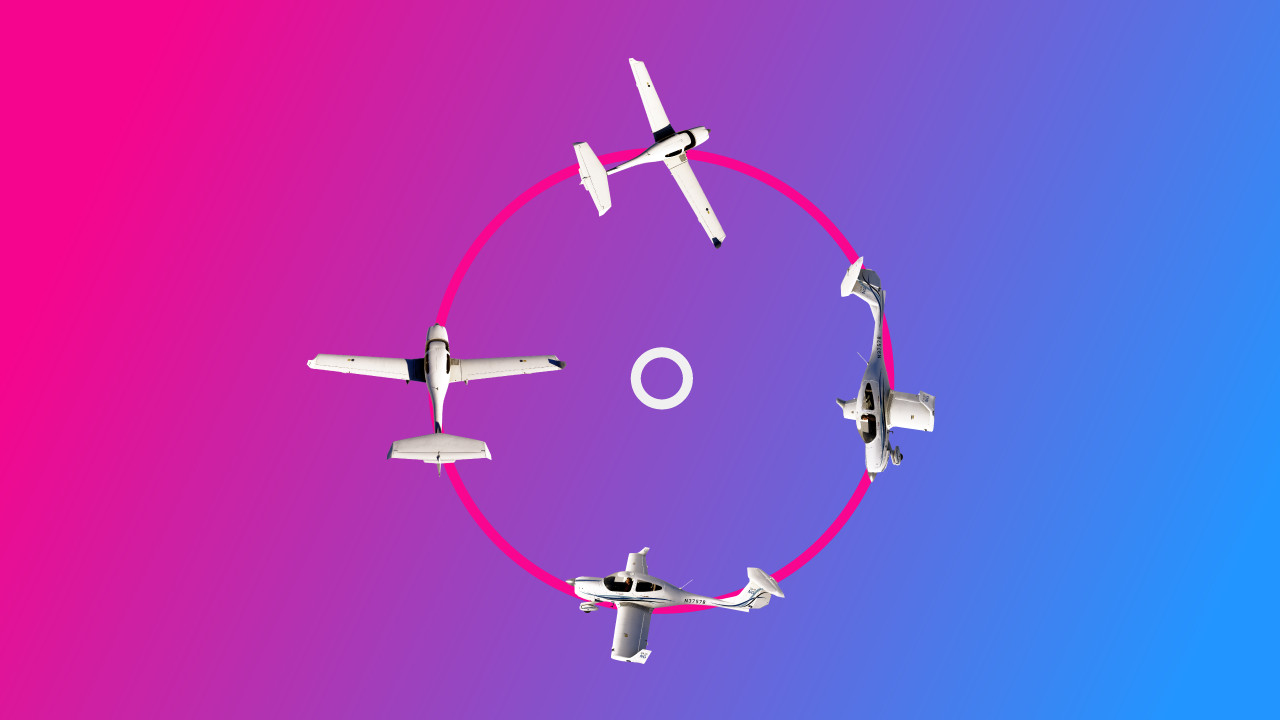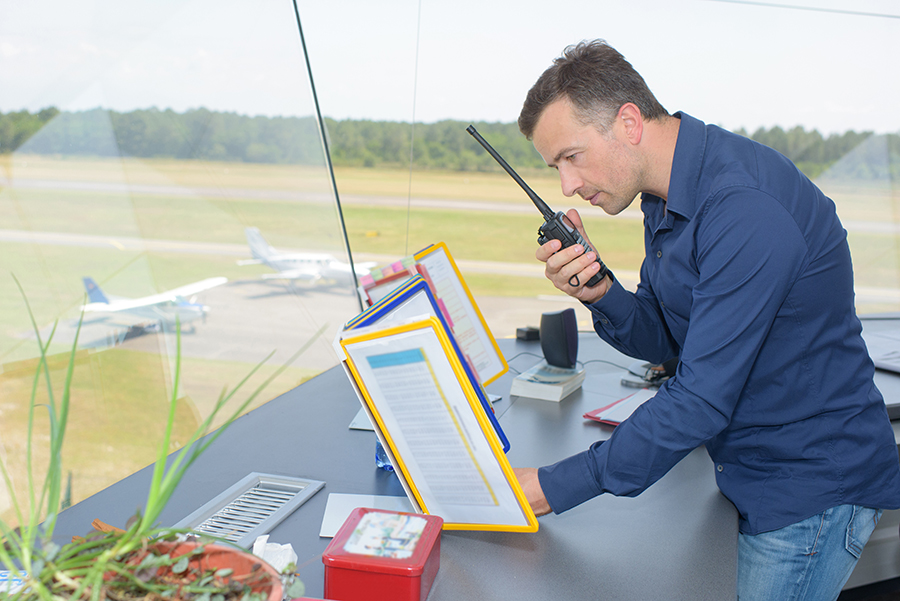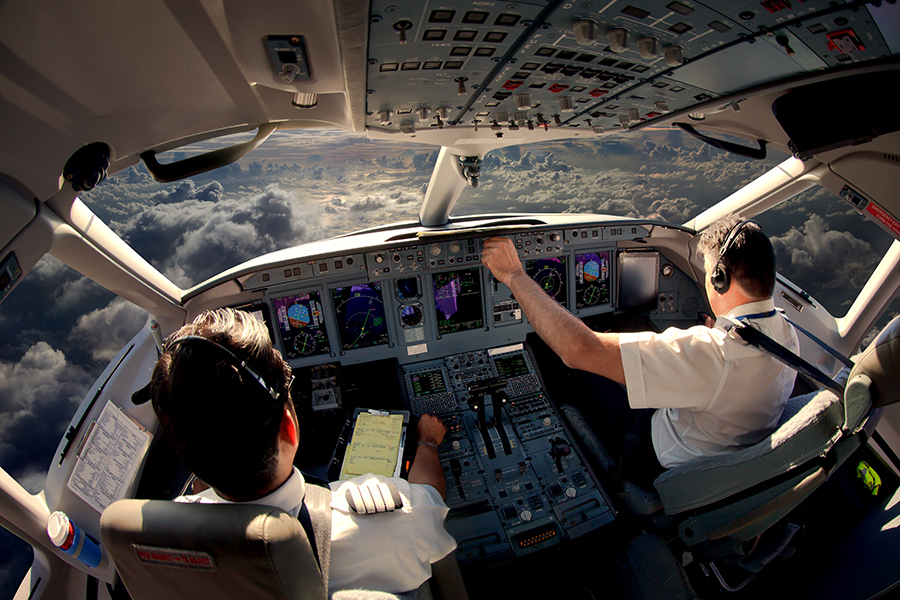-
Key Takeaways
-
Tunnel Vision Inside the Cockpit
-
Wordy Radio Communications
-
Heavy-Handed Control Movements
-
Skipping Pre-Flight Prep
- Not Preparing for Lessons
-
Using Low-Quality Headsets
-
Infrequent Flight Practice
- Recommended Flying Schedule
-
Situational Awareness Gaps
-
Misjudging Altitude and Heights
- What Should You Do To Avoid Misjudging Altitudes?
- Develop Good Habits
-
Conclusion
Flight training involves the act of sharpening your skills every day. As you step into the cockpit and start learning, you’ll quickly realize it’s about building good habits that make flying second nature.
But, let’s be honest, it’s easy to pick up a few bad habits along the way.
Maybe you find yourself staring at your instruments too much, or overthinking radio calls. Some mistakes can trip you up if you’re not careful.
In this guide we’ll explain the most common mistakes student pilots make and talk about how to avoid them.
Trust me, you’ll find yourself growing into a better pilot, flight after flight.
Key Takeaways
- Maintaining proper situational awareness inside and outside the cockpit is essential for flight safety.
- Clear, concise radio communications can mean the difference between safe operations and dangerous misunderstandings.
- Use smooth, precise control inputs for better aircraft handling and passenger comfort.
- Regular flight practice and thorough pre-flight preparation form the foundation of good piloting skills.
Tunnel Vision Inside the Cockpit
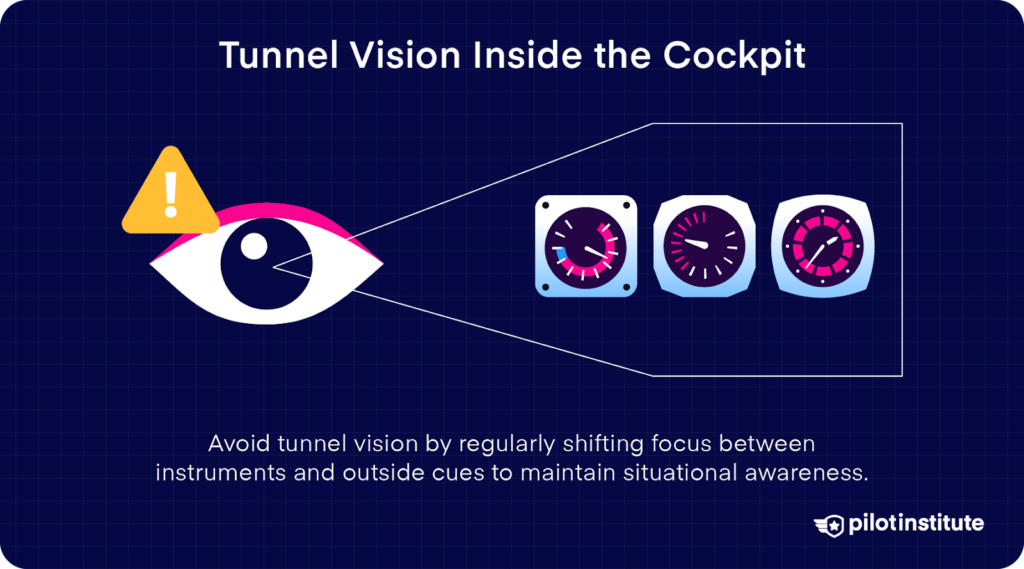
Do you remember your first time in the left seat of an aircraft? The collection of various aviation instruments may have made you feel overwhelmed.
Many student pilots fall into the trap of fixating or tunnel vision, which can create a dangerous disconnect from the outside world.
What should you do instead? Avoid tunnel vision in the cockpit by moving your eyes between the internal instruments and external references.
If you focus too much on the inside, you might overlook cues like approaching traffic, changing weather conditions, or landmarks.
Most Importantly, you must look at the big picture. To do that, you need to divide your attention by systematically scanning inside and regularly looking outside. This practice lets you maintain a good balance between the internal and external (visual flying).
Wordy Radio Communications
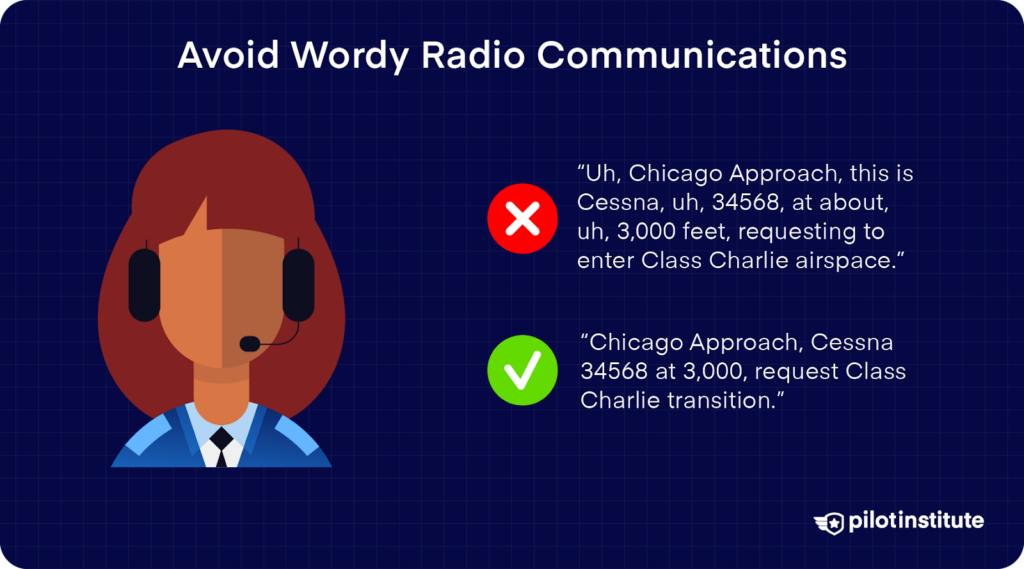
Student pilots often overcomplicate their radio calls, adding unnecessary details or using filler words (“uhs” and “umms”). Communicating in this way clutters radio frequencies and can lead to misunderstandings.
Here’s what to avoid:
“Uh, Chicago Approach, this is Cessna, uh, 34568, we’re at about, uh, 3,000 feet, and we’d like to, uh, request permission to enter the Class Charlie airspace.”
How to Improve:
ATC prefers clear and concise calls. Take a moment before pressing the mic, use standard phrases, and keep it short and to the point.
Better Example:
“Chicago Approach, Cessna 34568 at 3,000, request Class Charlie transition.”
Note: Ask your Certified Flight Instructor (CFI) or experienced pilots for additional radio tips, and practice at home.
Heavy-Handed Control Movements
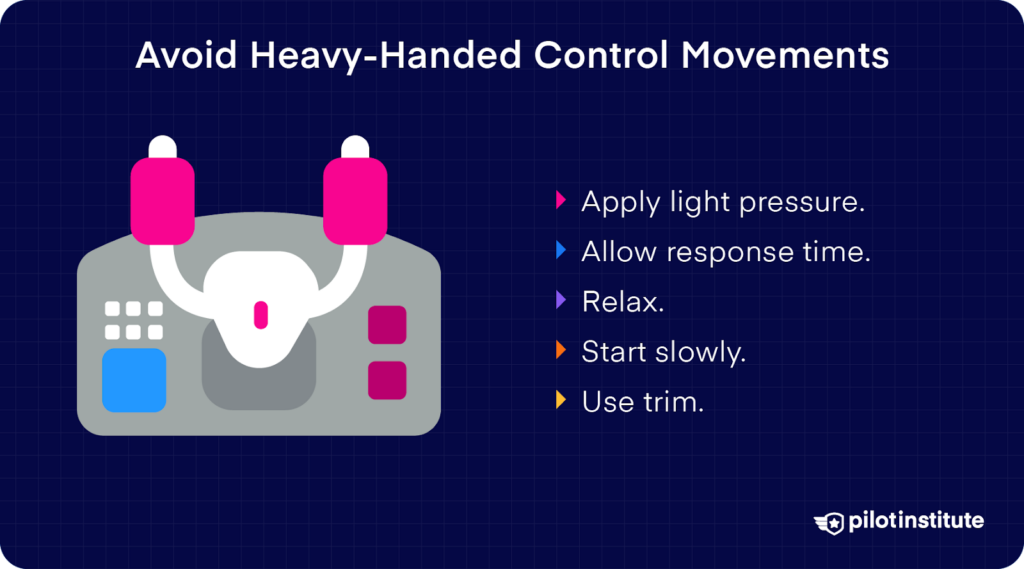
Unlike a car, the controls on your aircraft function differently. You need to make small, precise inputs to make the aircraft respond how you want. Why is this so important?
Over-controlling can result in pilot-induced oscillations and unstable flight characteristics. The most common signs of over-controlling include repeatedly moving the yoke back and forth or gripping the yoke too tightly.
Let’s take a look at what heavy-handed control movements can lead to:
- An uncomfortable flight.
- Increased risk of loss of control.
- Bad passenger experience.
- Reduced aircraft efficiency.
What should you do to prevent heavy-handed movements? Start by making small adjustments and allow the aircraft to respond before making further inputs.
You can use these tips for smooth and precise control movements:
- Practice fingertip pressure by using only two fingers on the yoke or stick to avoid overgripping.
- After each control input, count to three to give the aircraft time to respond.
- Keep your arm relaxed on the armrest while flying to minimize tension in your movements.
- Begin all control inputs slowly; you can always increase them if necessary.
- Use the trim to remove control pressure and maintain the desired altitude.
Skipping Pre-Flight Prep
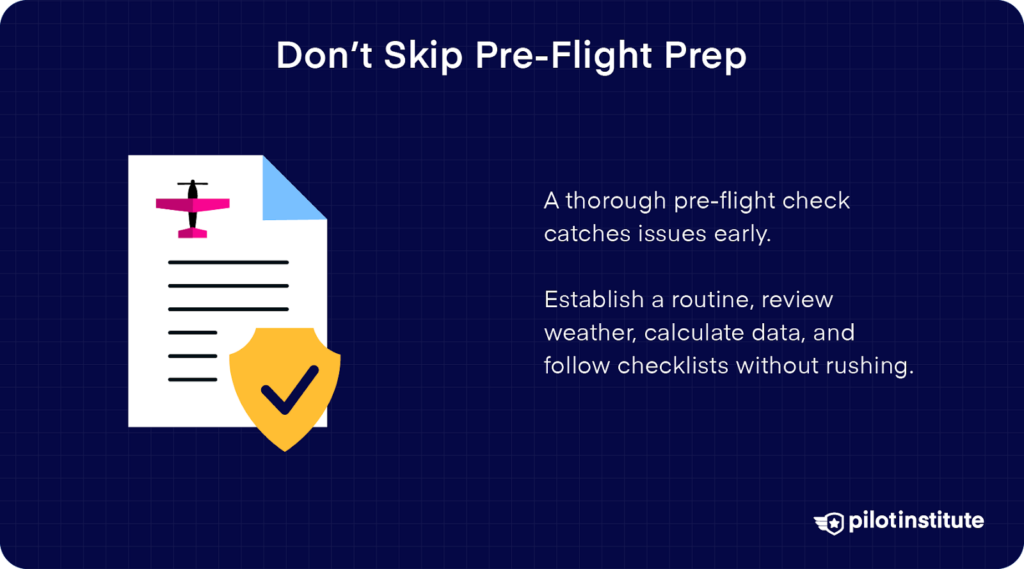
Before you fly, you need to check to make sure the aircraft is safe to fly. A comprehensive pre-flight routine can identify potential problems before they can turn into emergencies while in the air. That’s why skipping a pre-flight preparation is risky.
Cutting corners during your pre-flight can not only jeopardize safety but also result in stressful situations. For example, if you forget to tighten a loose fuel cap, the aircraft can quickly lose fuel during the flight, requiring a forced landing.
Here’s what Inadequate preparation can lead to:
- An accident or loss of engine power.
- Flying through bad weather.
- Poor flight planning.
- Fuel miscalculations.
Follow these strategies for better pre-flight planning and checklist use:
- Establish a consistent pre-flight routine.
- Review weather, NOTAMs, and airspace details.
- Calculate performance data (weight & balance, fuel).
- Organize flight planning materials in advance.
- Follow checklists without skipping any steps.
- Allow ample time to complete all pre-flight tasks.
- Develop a flow for checklist usage.
Not Preparing for Lessons
The consequences of inadequate preparation also apply to flight lessons. Your instructor will expect that you show up ready, having reviewed the necessary material and practiced the fundamentals. Not preparing for lessons has many drawbacks, such as:
- Slower overall progress in training.
- Increased training costs.
- Development of unsafe habits.
- Frustration for you and the instructor.
Using Low-Quality Headsets
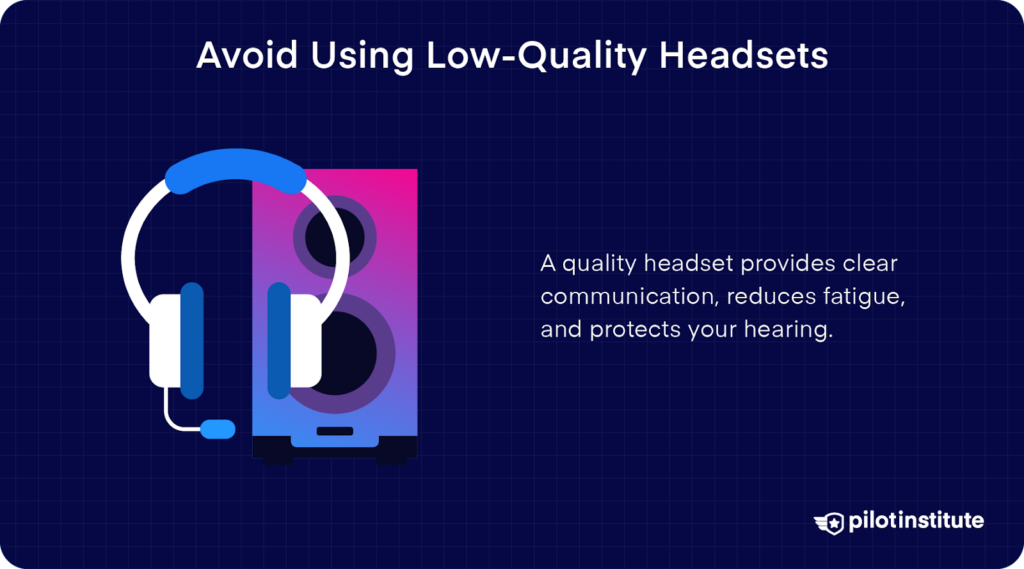
A bargain headset might save you money initially, but it could cost you in other ways. Poor audio quality can result in missed radio communications and risk safety. Just remember that choosing a high-quality headset is a smarter decision in the long run.
A low-quality headset can cause:
- Missed radio calls.
- Increased fatigue due to noise exposure.
- Difficulty communicating with your instructor.
- Potential hearing damage.
Consider your headset an investment in your training and safety. Look for:
- Good noise reduction capability.
- Clear audio quality.
- Comfortable fit for long flights.
- A reputable brand.
Infrequent Flight Practice
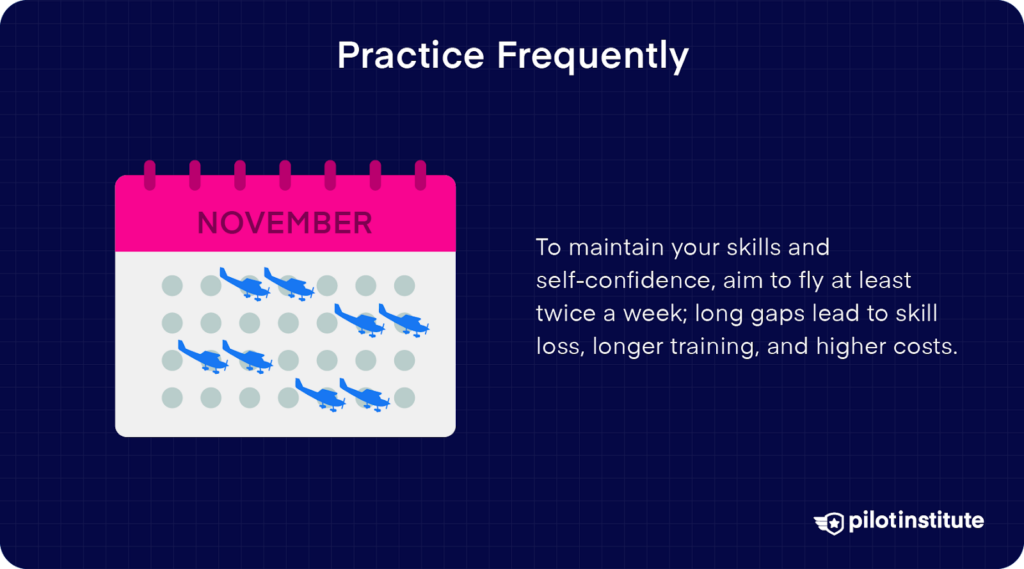
To become a good pilot, you need frequent practice. How does infrequent flight practice impact you? Without regular hands-on experience, your flying abilities can start to decline, and you may forget certain procedures. Sometimes, even a short break from the cockpit can affect your performance.
Long gaps between lessons can lead to:
- Skill regression/forgetting.
- Longer training time.
- Higher training costs.
- Less confidence.
Recommended Flying Schedule
Don’t let bad planning affect your flight training. You should aim to fly at least twice a week so that you remember what you have learned. If weather or scheduling prevents you from flying, use these alternatives:
- Practice chair flying.
- Do simulator sessions.
- Ground study.
- Radio communication practice.
Situational Awareness Gaps
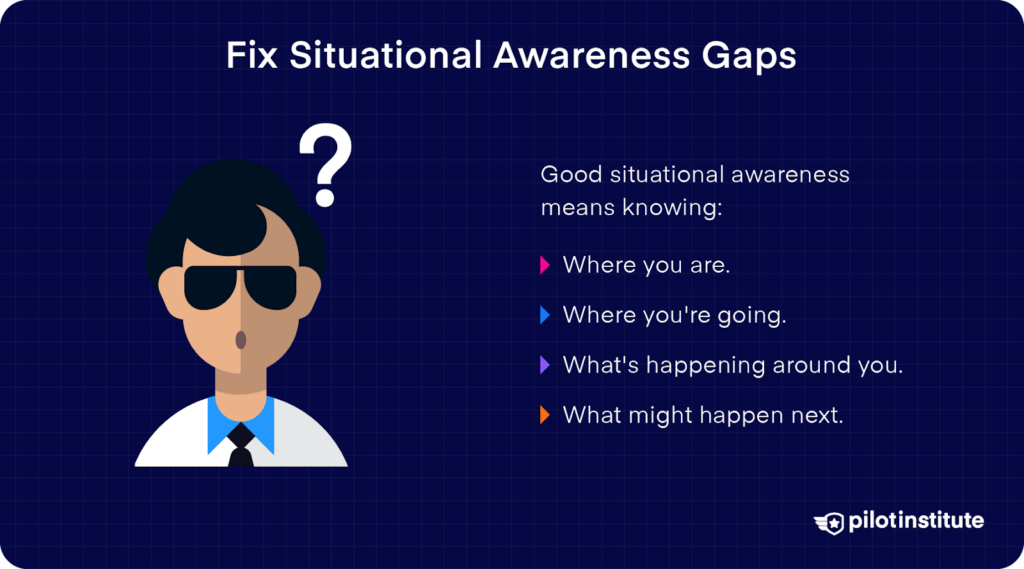
Having good situational awareness is essential for safe flying operations. Why does this matter? Numerous accidents have occurred due to pilots losing sight of their aircraft’s position, a change in weather conditions, or the surrounding traffic.
To develop strong situational awareness, you must practice and be able to process various sources of information (instruments, weather charts, maps, location, etc.).
A proactive approach and constant monitoring of your environment can prevent potentially dangerous situations.
Good situational awareness means knowing:
- Where you are.
- Where you’re going.
- What’s happening around you.
- What might happen next.
Common situational awareness mistakes include:
- Not monitoring your fuel status.
- Losing track of position.
- Missing radio calls.
- Forgetting to check weather changes.
Build your situational awareness by:
- Using all available resources.
- Conducting regular instrument checks.
- Staying ahead of the aircraft.
- Actively monitoring your surroundings.
Misjudging Altitude and Heights
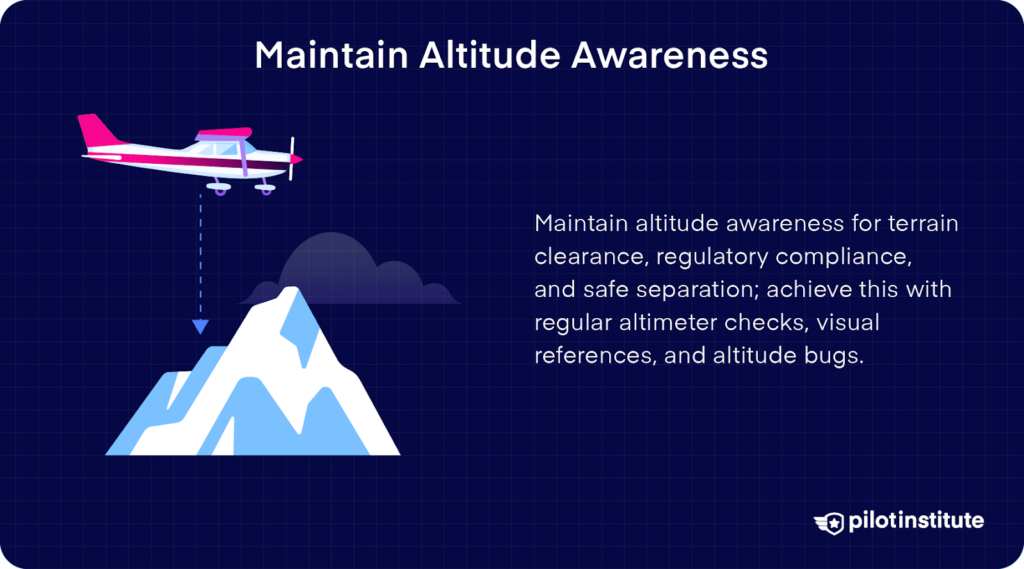
As a pilot, maintaining altitude awareness is an important skill for you to develop. Altitude management will make sure you have sufficient terrain clearance, can follow airspace regulations, and maintain safe distances from other aircraft.
What Should You Do To Avoid Misjudging Altitudes?
The best method is consistent altimeter checks and verifying your position using visual references or landmarks. If you have low visibility, use your instruments to fly steady and avoid spatial disorientation.
The most common altitude mistakes include:
- Descending below pattern altitude.
- Failing to clear terrain.
- Incorrect cruise altitudes.
- Misjudging height during landing.
Improve your altitude management by using these techniques:
- Setting altitude bugs.
- Using visual references.
- Maintaining regular altimeter checks.
- Practicing power-pitch combinations.
Develop Good Habits
Developing good training habits early on will benefit you later on in your flying career. Remember that every flight is a chance to improve your skills and avoid making common mistakes. So, stay attentive, uphold high standards, and always keep learning.
After each flight, ask yourself:
- Did I maintain good situational awareness?
- Were my radio communications clear?
- How smooth were my control inputs?
- Was I properly prepared for the flight?
- Did I manage my time effectively?
- What could I do better next time?
Conclusion
Flying is a skill that demands both patience and practice. It’s easy to get caught up in mistakes that feel frustrating, but they’re just part of the learning process.
Pay attention to what trips up most student pilots and make a conscious effort to avoid those pitfalls.
You might have days where things don’t go as planned or where you’re replaying what you could’ve done differently. That’s normal. What really counts is that you learn from those moments and keep pushing forward.
Keep learning, and trust that every lesson makes you a better pilot.

